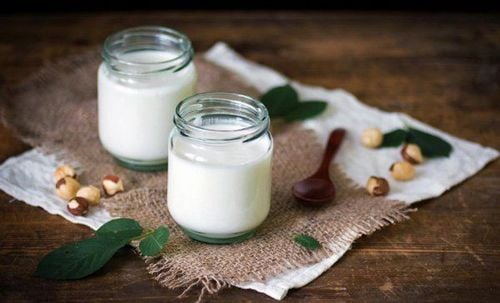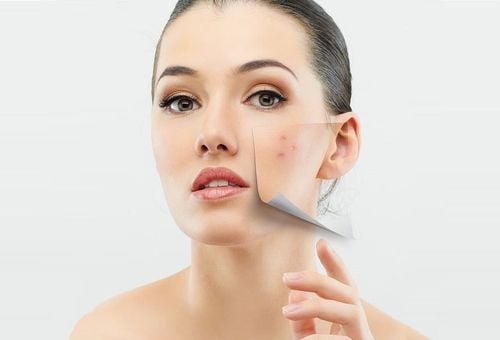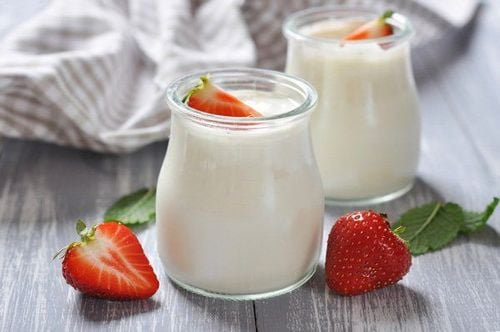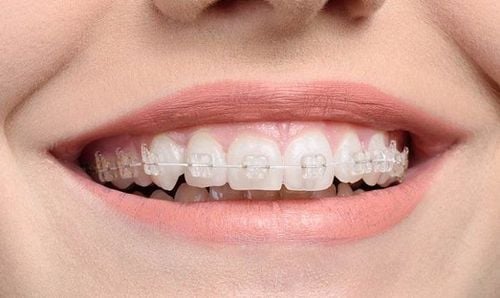This is an automatically translated article.
Fresh milk is an excellent nutritional supplement, bringing many benefits to human health. Milk contains a lot of vitamin A, vitamin D, lactic acid and many other substances. Some views also believe that milk has the ability to care and nourish the skin when used topically. So, is it good to apply a mask of fresh milk without sugar every day?
1. Can fresh milk clean the face?
Milk contains lactic acid, an alpha hydroxy acid (AHA) found in many other modern skin care products. Lactic acid (found in milk) is a particularly common ingredient in anti-aging cleansers. Studies suggest that lactic acid can help remove dead skin cells and stimulate new cell growth.However, relying on lactic acid alone cannot make raw milk a cleanser for the face. There is no evidence from practical studies that milk can clean the face better than water and other mild face soaps.
MORE: How often to use masks in your skin care routine
2. Does the mask of fresh milk lighten the skin?
Milk is characterized by its creamy texture and mild acidity, which leads some to believe that raw milk is a great ingredient for face masks. However, even if users are not sensitive to dairy, they should still use fermented dairy products (such as yogurt or sour cream) as ingredients for homemade face masks rather than using fresh milk directly.
Some people often apply milk directly to their skin to make their skin brighter. However, these skin lightening methods are only passed around and can be harmful when used long term. The lactic acid found in milk is an ingredient in many skin lightening treatments and blemish creams, but there are no clinical studies that show milk or lactic acid helps lighten skin.

Chưa có nghiên cứu và kết luận rõ ràng về hiệu quả làm sáng da của sữa tươi không đường
3. Does milk treat acne?
Using milk for acne can be a good idea because vitamin D deficiency is a factor in acne, while milk is rich in vitamin D (and other vitamins). Besides, milk also creates a feeling of lightness and comfort when applied to acne. However, the notion that milk can temporarily reduce the appearance of acne is just word of mouth that has not been proven by any research.
Using milk every day to apply to the skin is strongly associated with a higher incidence of acne breakouts, as this can clog pores or irritate acne skin.
SEE ALSO: After exfoliating, should I apply a mask?
4. Can I moisturize my skin with milk?
Using milk to moisturize the skin every day can be more effective than not moisturizing by any method. However, there is still not enough evidence to suggest this is a good idea.
Milk is not a humectant by nature, which means it has no moisturizing effect on the skin. Instead, users can use other proven products and moisturizers (such as essential oils) that will help make the skin less dry.
5. Does milk have the ability to exfoliate?
Its mild acidity and lactic acid content make milk a popular exfoliating ingredient. Some people have had success using milk to gently exfoliate dead skin cells. In addition, some studies suggest that concentrated lactic acid stimulates cell turnover while removing dead skin cells. However, there is still no direct study that shows using milk to exfoliate the skin better than other proven effective exfoliating products.

Kết hợp sữa tươi không đường và một số nguyên vật liệu tự nhiên có thể giúp tẩy da chết hiệu quả
6. Does milk cure sunburn or dermatitis?
Using cool milk (refrigerated milk) to apply to the skin draws heat away from the skin cells after being exposed to the sun for too long. Although the effect of milk in the treatment of dermatitis or sunburn is not clear, but as long as the user's body is not sensitive to milk, applying cool milk to the skin will not do any harm.
Users can use milk cartons (with an expiry date) or milk stored in the refrigerator to cool and soothe uncomfortable symptoms caused by sunburn. However, it is always best to protect the skin from the sun by using other measures (such as sunscreen, a protective jacket).
7. Is it okay to apply a mask of fresh milk without sugar every day?
In fact, there are many milk-based skin care remedies such as masks or shower gels, but there is very little scientific evidence that this is beneficial for the skin. If you belong to the 65% group of people who are sensitive to lactose (an ingredient found in milk), applying a raw milk mask may cause signs of irritation such as a rash or other reactions.
Using or applying a mask of raw milk without sugar or even a mask of raw milk potatoes is not a good idea, especially for someone who is sensitive to bacterial acne. The reason is because fresh milk will cause bacteria to accumulate on the user's skin. At the same time, there is no clinical evidence that applying raw milk masks helps to exfoliate or brighten the skin.
Even applying a mask of raw milk can have side effects. As mentioned, up to 65% of the world's population is sensitive to the lactose present in milk, so milk can cause skin problems when applied topically. However, the health benefits of milk when used as a food have been proven for a long time. Therefore, using milk in the right way can help the body have the following benefits:
Stronger bones; Add more calcium; Provides an excellent source of protein; Limit and prevent weight gain; Helps reduce blood pressure; Vitamin D supplements help improve mood. Many people have used the method of masking with raw milk, but there is little scientific evidence about the real benefits of this method. Therefore, instead of using fresh milk, you can replace it with other natural masking methods or dairy products such as yogurt, sour cream....
Please dial HOTLINE for more information or register for an appointment HERE. Download MyVinmec app to make appointments faster and to manage your bookings easily.
Reference source: healthline.com












